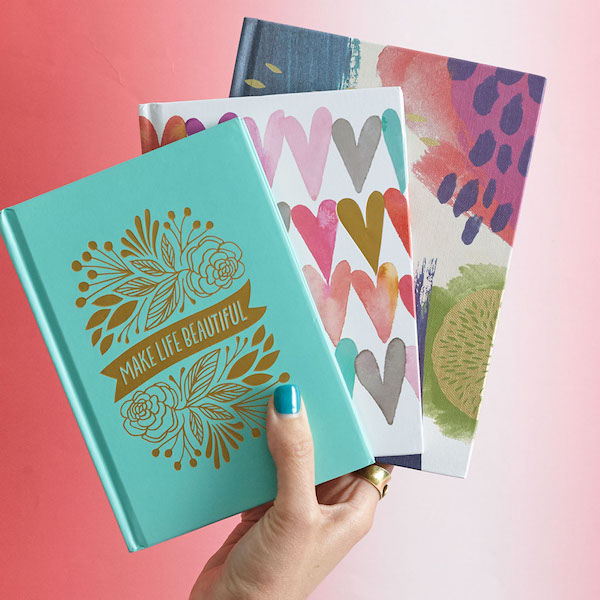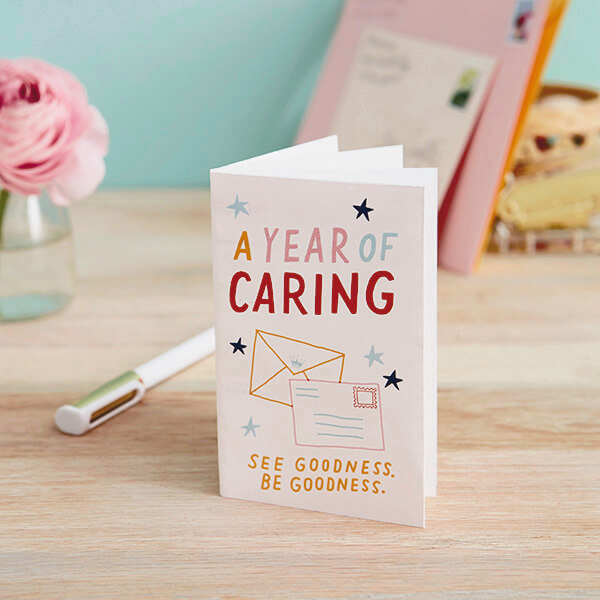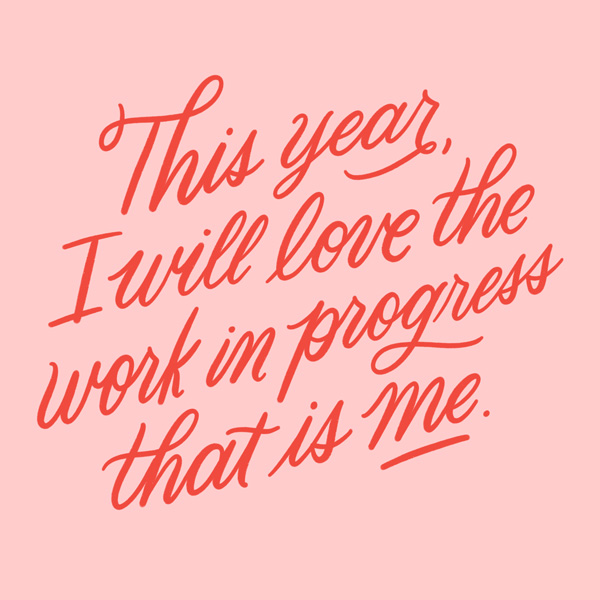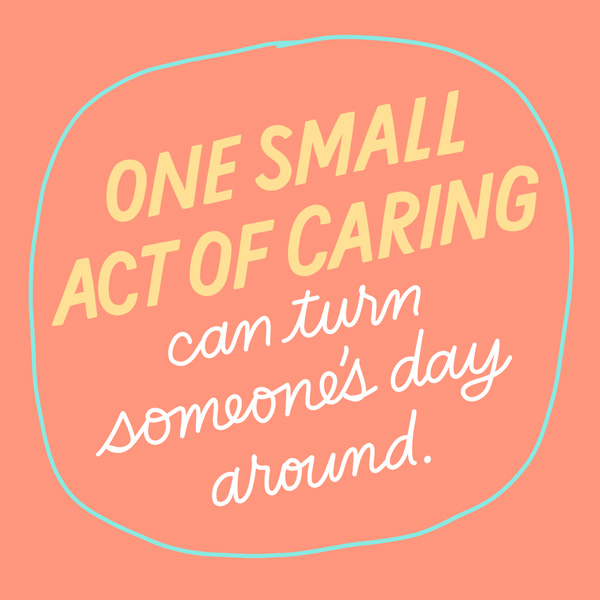How to start journaling

So you want to start a journal? Right on! In this article, we’ll talk about how to start journaling, reasons to do so, journaling ideas and inspiration, and help you choose the approach that works for you.
Inspired? Create and share by tagging @Hallmark.
What is journaling anyway?
At its heart, journaling is simply documenting the moments and events of your life, along with your thoughts and feelings about them.
When you think of journaling, you might picture a brooding teenager furiously scribbling in a diary, which she takes care to lock and hide later. But increasingly, journaling has moved beyond pure writing to incorporate photography and other visual expression. In many cases, people are also taking their journals public, sharing them as a blog, a social media feed, or other type of online journaling.
There really are no rules. You can tailor your journal to a particular interest or goal. You can choose the tools and approach that work best for you. You can keep your journaling short and sweet, or go on and on…it’s really up to you!
Why journal?
The potential benefits of journaling are endless, and you’re not limited to just one. You can reap multiple rewards at once.
- Therapeutic value: Writing about what’s going on in your life has proven mental health benefits. Simply getting your thoughts about current circumstances or past events down on paper can help you process feelings, and get the distance you need to view things more objectively. Especially when negative thoughts start looping in your mind, journaling can open up the loop and give those thoughts a more productive place to go. See our article on journaling for self-care for more.
- Creative expression: Clearly, a daily journaling practice is an essential way for a writer to hone his skills, develop a voice, and explore ideas. Journaling also has value for more visually oriented creative folks, who might incorporate sketches, doodles, photography, scrapbooking or design work into their journal entries. You don’t need to be a pro. Whatever your skill level, a journal can serve as a playground for creativity—a safe place to try and fail, to explore, and to grow cool ideas.
- Spiritual growth: Whether you’re praying on paper, journaling in response to Scripture, or mindfully writing down little holy moments throughout your day, journaling can help you develop your spiritual side. Many people find value in journaling as part of daily prayer or devotional time.
- Goal setting and tracking: Goals have a way of becoming more real when you commit them to paper. And journaling about your experiences as you work toward a goal can help you find meaning in the journey. That holds true whether you’re training to run a marathon, pursuing a degree, de-cluttering your home, or striving to read a hundred books in a year.
- Memory keeping: Whether you mean to or not, you’re saving a memory every time you capture a thought or a moment from your day. It might be something as ordinary as “Ate popcorn on the porch and watched the sunset with Olivia.” Chances are, when you stumble across this line a year or two later, it will warm your heart to remember the moment, the person, and what life felt like at that time. Photo apps like Timehop and Facebook’s Memories also operate this way, serving up little memory cues that call up so much more.
How to journal
Wondering how to start journaling? First, choose your tools.
Digital: If you’re a true digital native, time-stressed, or both, then typing in a notes app on your phone, or posting a daily photo on Instagram, might be the best way to start and stick to the journaling habit. Many Internet-based print shops can help bring your journaling back into the physical world by sending you a photo book whenever you favorite or post a particular number of photos on social media.
Pen(cil) and paper: Thought it might seem old-school, there really are compelling reasons to do your journaling on paper. In her book Writing Down the Bones: Freeing the Writer Within, writing teacher Natalie Goldberg encourages writers to write daily, and to do it by hand because, she says, “Handwriting is more connected to the movement of the heart.” Scientific study has shown that drawing and handwriting are also deeply connected to the mind, activating multiple areas of the brain. Any kind of journaling book can help you achieve that hand-heart-brain connection, from an inexpensive composition notebook or steno pad, to a beautiful hardbound journal or sketchbook. It’s whatever works best for you.
Think outside the page: You don’t need to tie yourself to an app or a notebook at all in order to journal. For instance, you could write letters or emails to your future self, to be delivered or discovered at some later date. Or you could start a journal jar, asking each member of your household write down one good thing that happened each day and drop it in the jar. Then, at the end of the year, you sit down and read all the good things together. It might just become a tradition!
Next, choose your focus. Think about what you hope to get from journaling, and which approaches have the most energy for you. Here are some popular journaling ideas and types, but you definitely don’t have to limit yourself to a single focus for all time.
Activity/passion focus
Travel journaling: You could devote a whole journal to the experiences of a single big trip, document multiple journeys and destinations over time, or simply write about your travels in your everyday journal.
Recipe journaling: Track your culinary adventures, including hits, misses, modifications, and more. You can get a journal specifically designed for recipe journaling, or adapt any notebook or binder to your delicious purposes.
Parenthood/kids journaling: These can take any form, from writing down the cute things your kids say and do, to processing your feelings about parenting struggles, to writing a quick note to your child at the end of each day. You might keep these journals for yourself, or plan to give them to your children when they’re older.
Brevity focus
Five-year journaling: Also known as “one line a day” or “one sentence a day,” this type of journaling has you write down a single thought or event each day over the course of five years. So, if you stick with it, you’ll be able to look back and see at a glance what you were doing or thinking on April 22 for five years running. It’s a cool long-term project requiring minimal daily effort. There are both printed journals and digital apps designed for five-year journaling—some free form and others with prompts or questions.
Other short-form journaling: Photo a day, haiku a day, (six) words a day, doodle a day, page a day…really, whatever you can think up to keep it short and doable.
Goal Focus
Bullet journaling: This popular type of journaling brings together elements of design, daily/weekly/monthly planning, and short and long-term goal setting—all in a highly visual and easy-to-navigate way. Lots of folks swear by it, and find creative ways to adapt it to their own needs and interests.
“____ days of ____” journaling: These journals document your commitment to a specific activity or new habit over a set period of time. Examples: Thirty Days of Clean Eating, 365 Days of Selfies, A Year of Kindness, etc.
Fitness and food journaling: This type of journal might appeal to someone aiming for a healthier lifestyle. It could include writing down everything eaten in a day, and noting triggers that lead to unhealthy choices. Or it might involve writing about workouts and tracking strength gains or weight loss over time.
Spirituality Focus
Gratitude journaling: Writing down or photographing your daily blessings can put you in a better place spiritually. And the good news is, it doesn’t have to be a Thanksgiving-time-only journal. You can do it anytime!
Other mindfulness journaling: This might involve paying close attention and vividly describing sights, sounds, tastes, thoughts or funny moments from your day. The emphasis is on slowing down, noticing, and appreciating.
Prayer/devotional journaling: Writing as you pray can help you shut out distractions. Journaling can also help you read Scripture more closely and thoughtfully. You could do this using any notebook, or opt for a guided devotional with suggested readings and writing prompts.
Bible journaling: Rather than squeezing notes into the margins of an ordinary Bible, you could invest in a journaling Bible specifically designed for the purpose, complete with lined margins for your personal thoughts and reflections on Scripture. It might be interesting when you return to a page later to see how the same passage strikes you differently over time.
Writing Focus
Free writing: This usually means writing about whatever comes to mind for a set period of time, often 10-30 minutes. The emphasis is on sustained writing, with little regard for organization or perfect spelling, all in the name of creativity and discovery.
Responding to prompts or thought starters: If free writing is a little too free for your tastes, then you might enjoy writing in response to prompts, questions, or other thought starters. These might be more creative in nature, inviting you to invent a scene, story, or character. Or they might be more personal, encouraging you to explore your past, your hopes and fears, your hidden areas of expertise, or something else about yourself. You can find journaling prompts in creative writing books and all over online. Prompted journals and journaling apps are also widely available.
Other things to consider as you start your journaling journey
How much time do you want to spend? Journal daily or less often? Solo effort or collaborative challenge? Share it or keep it private? Keep or toss when you’re finished? There are no wrong answers to these questions—they’re just things to think about as you get going.
If you’d rather have individual prompts instead of giving your journal a dedicated theme or purpose, we’ve got lots of self-care prompts and mindfulness journaling prompts.
Happy journaling!
Shop Journals
See allYou may also like
See more-
Christmas The best way to watch Christmas movies: Create a me-time marathon
Many holiday activities require planning ahead. And once we pencil in family time, parties, special meals, school eve...
-
Christmas Single during the holidays? How to have fun and stay connected
To all the awesome unattached folks out there: I get it. Winter is coming. And you are single during the holidays.
-
Lifestyle 10 tips to make time for relationships
Here are 10 of our favorite tips to make time for relationships and the people you care about most.
-
Care & Concern What is self-care?
So, what is self-care, exactly? Learn more.
-
Lifestyle Self-care journaling ideas
We've put together some self-care journaling ideas to get started on your journey and turn it into your very own self...
-
Care & Concern Be more caring with a kindness journal
It's obvious the world could use more kindness. So this year, why not make "be more caring" your number one resolutio...
-
Lifestyle 50 mindfulness journal prompts
So you’ve found the perfect journal and you’ve got your favorite pen handy. Wondering where to begin? Don’t worry. If...
-
Lifestyle Self-care quotes - because you deserve them
Self-care is trending these days, but the idea is not new. You hear it at the beginning of every big journey...
-
Friends How to survive a friendship breakup
There are a few things that I dreamed of having more than anything as a kid—like a golden retriever, my own room, mer...
-
Lifestyle 30+ Self-Care Journal Prompts
As a writer, journaling is pretty much my go-to self-care tool. When I need to check in with myself, scribble down so...
-
Care & Concern Resolve to Show You Care: Make This a Kinder, Happier New Year
Show you care. It’s the one resolution that can improve your relationships, make you happier and healthier, and cr...












